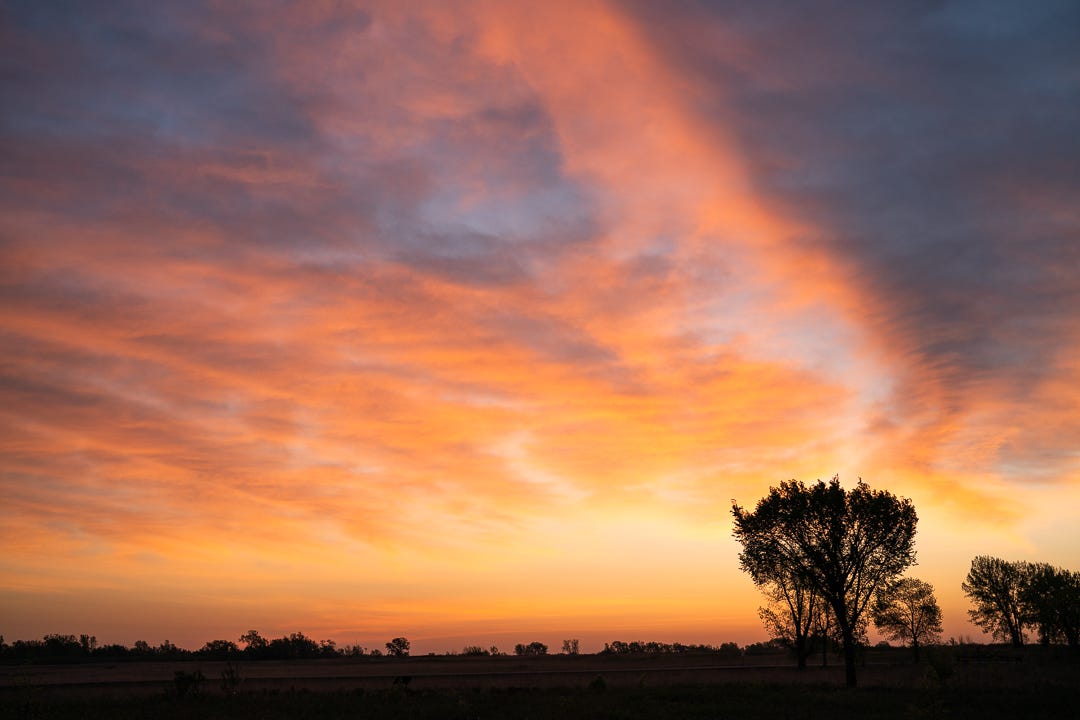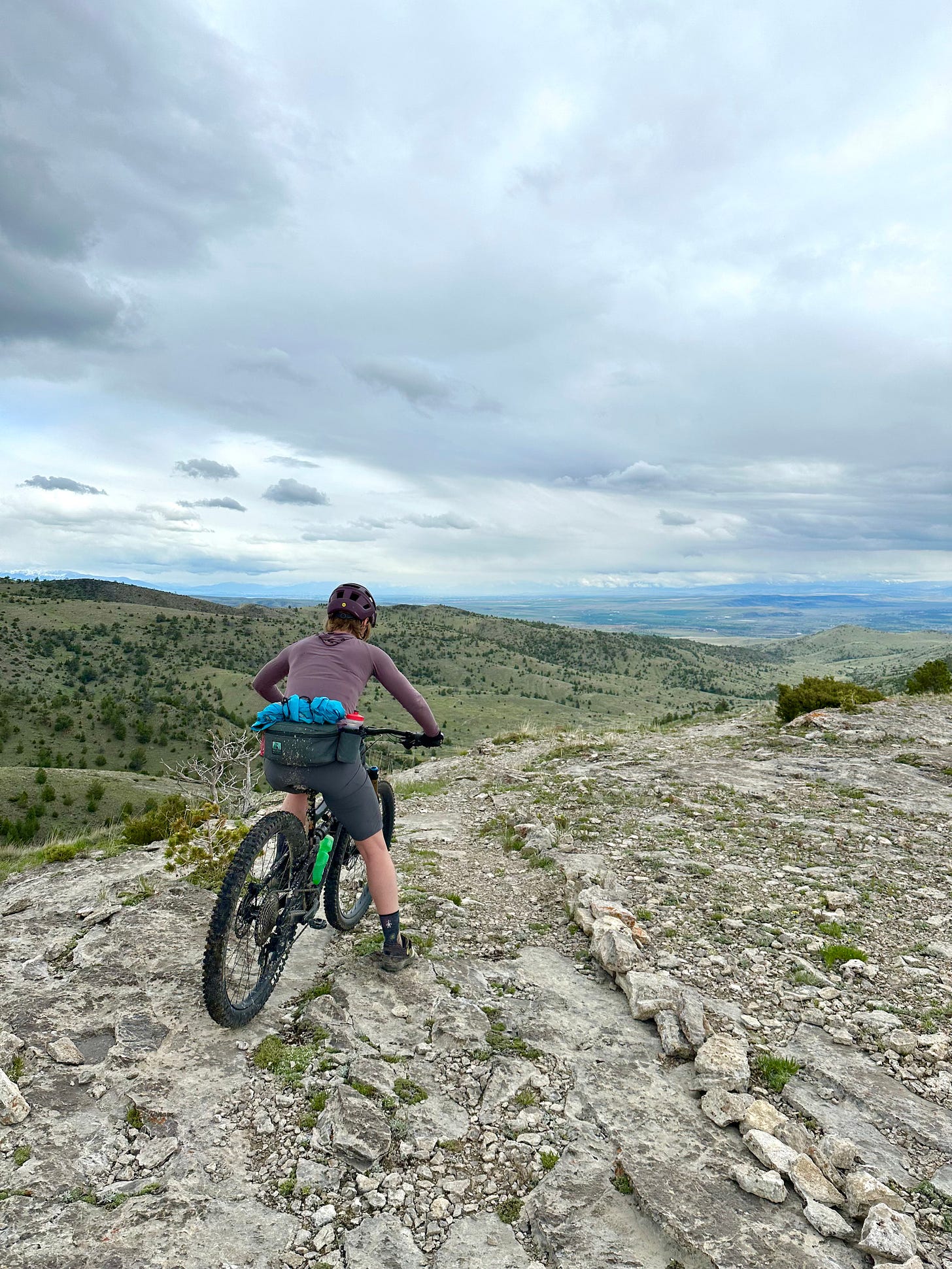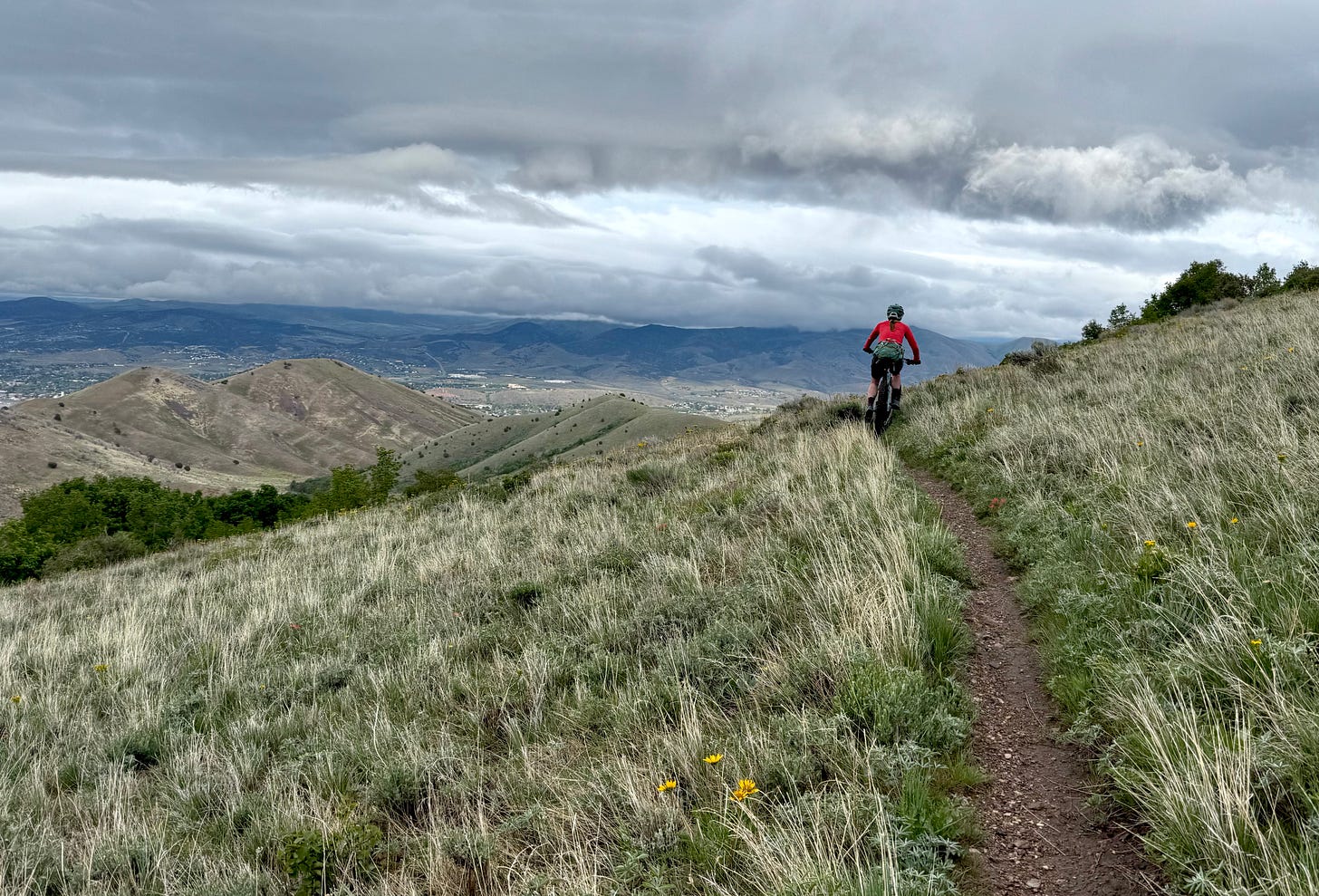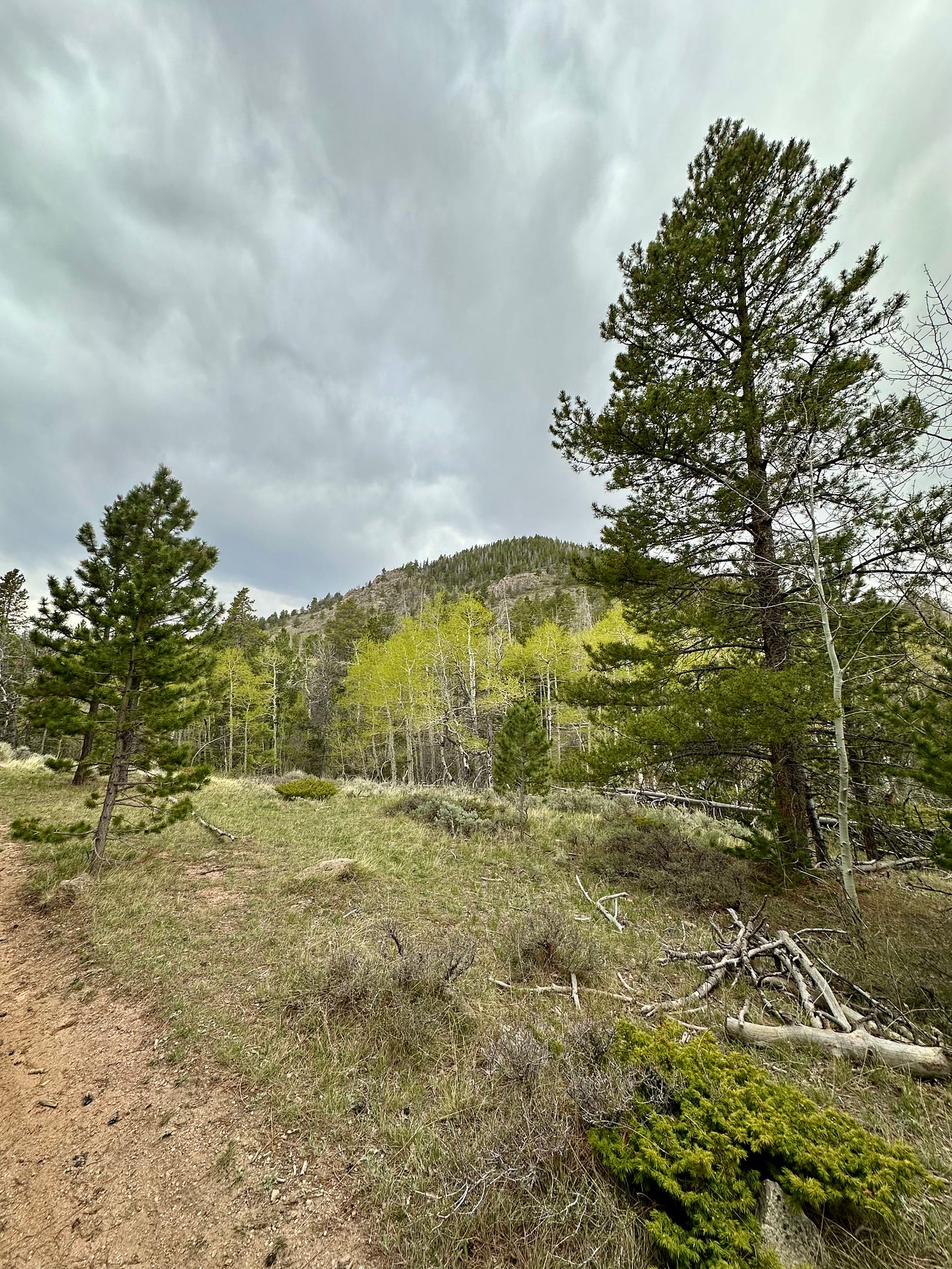Our Land is Not For Sale
Discover the millions of acres of land you own as an American. And tell Congress, today, not to sell it.

The evening light is in my eyes as I drive west, and I strain against it to make out a long, loping silhouette in the road before me. The animal darts from the right lane to the left, and then up a bank just off the Trans-Canada Highway I am traveling. I pull over, sure of what I’ve seen while driving through Lake Superior Provincial Park. A white wolf, with a few gray patches, has just crossed in front of me. The animal stands there on the bank, hiding most of its body behind coniferous shrubbery as it peers back at me and my roadtrip chariot, a Toyota Tacoma. I reach for my camera slowly, aware that any movement might spook the animal. Our eyes lock and we take each other in for a few long moments. The white wolf strikes me as both vividly wild and remarkably doglike as it bobs its head back and forth between the bushes to get a better look at me. And then just like that, it’s gone, off into the wilderness, my hand lying idly on my camera in the passenger seat.
I was 24 hours into a multiweek roadtrip out west, and five minutes earlier, I’d been treated to a moose sighting also (video below). I was bound for Montana, Idaho, and Wyoming, to see friends I hadn’t seen for years. But the trip was also about taking time for introspection. I’d been working more than full-time this past year, and needed some space to breathe and reflect, to recharge my tired soul. Thus my detour through Canada, prioritizing public land for quiet contemplation over the faster route of bustling I-80 through Chicago.
I thought that once I made it to the Rockies I’d end up in familiar haunts, the National Parks and campgrounds where I first explored the West in my early twenties. But as I met up with friends that call these western states home, I found them suggesting other types of public land for our recreating. I made my way to a variety of mountain bike trails that exist on Bureau of Land Management (BLM) and Forest Service Land, and was offered horse back rides on BLM land with backdrops of snow capped mountain ranges such as the Tetons. I drove through mountain passes with jaw dropping views, comprised of BLM and Forest Service Land that you and I and every other American own and can find solace in.
BLM and Forest Service Land comprise millions of public acres that Western folk need no education on. You can find this land on the outskirts of cities for recreating, and stretching deep into the wilderness for multi-day adventures. These places hold critical habitat for countless species, harbor clean water, sequester carbon, and are a treasure every American is born with rights to.
If you are an East Coaster, you might not be as familiar with this type of public land. The majority of BLM and Forest Service Land lies out west. You can find each state in tables on the Congress.gov website and see just how much, or little, of this type of land your favorite states hold. More importantly, and certainly more interesting than a table, I urge you to look at this map, put out by the Wilderness Society, to understand the BLM and Forest Service land that was proposed as eligible for sale per a recent amendment to the budget reconciliation bill brought forth by Utah Republican Senator Mike Lee.
Mike Lee’s proposal came just weeks after my recent roadtrip, and is a direct threat to the public land that I found myself deeply connecting with friends on. In his proposal Lee called for 2 to 3+ million acres of public land to be sold to private interests. Once that land is sold and developed there is no restoring it to the American people, or to its natural state. The map I referenced above shows the 250 million acres that would have been eligible in Lee’s proposed mass sell off. It includes the bike trails I bonded with friends on in Idaho and Wyoming. Interestingly, the sale proposal didn’t include land in Montana, likely a nod to the firm stance representatives there have taken on protecting public land. You can learn more about that, and get clear on some of the facts of this proposed sale, in this Fresh Tracks podcast.

Back out west last month, I had no idea that the land that was replenishing and refueling my American, overworked soul would be under threat in a mere couple of weeks. I felt grateful for this large and sweeping land that I have rights to, here for me even if I can’t make it to these westerly places for years at a time. I caught up with friends while biking up and across hills full of yellow wildflowers, and dipped into luscious green valleys. All the while snowcapped mountains decorated the horizon in the distance, a reminder of how large this landscape really is. I was truly in Big Sky Country. This was a change for me, an east coast kid used to pedaling in dense forests with cover, with only a view here and there. Here in the west, on this public land, I marveled at views the entire ride.

It was on this land that I found myself and my friends opening up in ways I hadn’t expected on this trip. As we peddled our bikes across BLM and Forest Service land we’d stop to take in the beauty of this country. Here, our conversations got deeper. We talked about starting businesses, about what it would take to live the lives of our dreams, about mental health, about therapy. We spoke of loved ones dying, of loved ones aging, of money issues, of relationship challenges… all in a couple hours on a casual afternoon. It was easy for me to feel I could open up here, in this wide open country, where there was a friend and a never ending sky to hold me. No judgement, no hustle bustle, just endorphins on a bike and a feeling that I was at home… even though I’d never been on these lands in my life.
As each of my friends and I discussed our lives’ deepest toils and our great aspirations we looked out at the distant mountain ranges, a place to settle our eyes when we said the things that are hard to say out loud. Maybe that’s why biking, or walking, or hiking or camping, or hunting on public lands invites such deep conversation. Out here, we are free of our cluttered lives, of our cluttered minds, of the doubts that hold us back, of shame and embarrassment. Out in the mountains we can focus on the great expanse in front of us and let our true souls be seen, can have a true adventure, can be who we are really meant to be.

When I returned to Vermont I told a friend of the white wolf I saw while traveling through public land in Canada. Her face took on a look of surprise, and then a smile, and she told me that a white wolf represents a connection to the inner-self. How fitting to see that wolf on day two of a trip on which I was seeking introspection. I can’t help but think about the fact that the white wolf would not have been there without somebody in history valuing that land and protecting it. This is where the power of the public lies. Individuals and groups work diligently to protect places they love, and in turn we all can visit these places and expand our human experiences in ways we never saw coming.
Whether you have experienced such public lands firsthand or not, know that they are out there for you. But they need your protecting. Every American has a voice, and it takes 60 seconds to let yours be heard. Call your representatives and senators by searching for their numbers here. Mike Lee’s recent amendment was thrown out yesterday, but he is working on making changes to propose yet another amendment to privatize public lands in the budget reconciliation bill. This one would continue to threaten BLM land, including some of the places where I was riding, where community members seek recreation just out of town. The outdoor industry is calling on all of us to flood the lines of our state reps today, Wednesday, June 25th… (and until this language is out of the bill) to keep the land that is yours, mine, and that of future generations, in the hands it belongs in: all of ours.
Links:
Federal Land Ownership: Overview & Data, Congress.gov
Map of Bureau of Land Management and Forest Service Land (don’t forget to zoom out to see Alaska)
Fresh Tracks Podcast: The Biggest Threat to Public Land in our Lifetime




